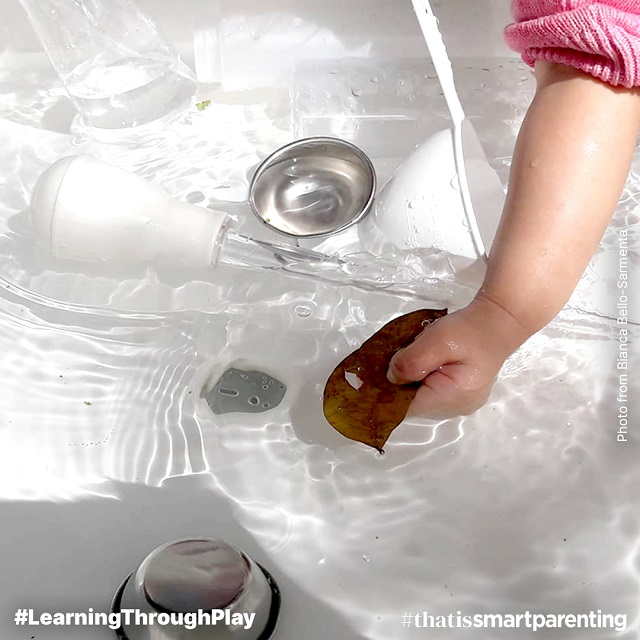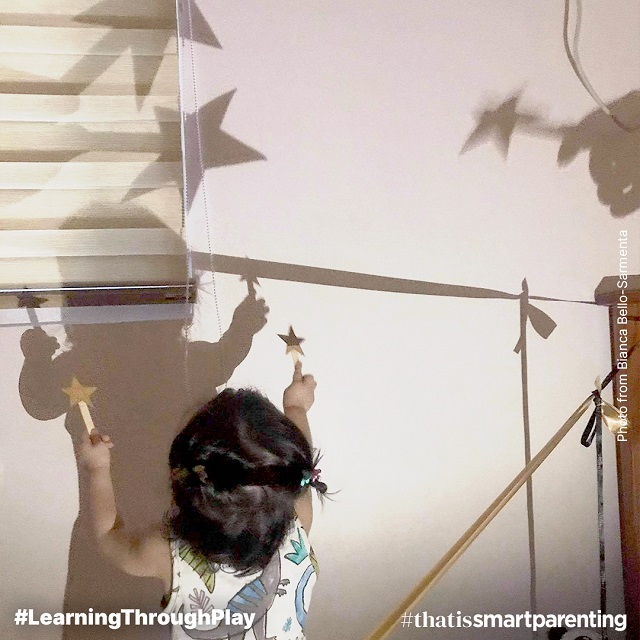-
When my daughter hit toddler age, it felt like I was looking at a totally different person. A new host of skills also meant a whole new set of worries when supporting her development. It felt like time was speeding up, and I had to keep up for her to learn.
My training, however, would constantly remind me that all children really need to optimally learn is play, time, connection, and your trust that they are capable.
Dr. Alison Gopnik, a developmental psychologist, leading the field in discovering just how capable children are, says children are born scientists. Her data shows how children, without a single formal lesson, really think, learn, and discover like scientists. And the best way for them to develop this inborn capacity for learning is through lots of daily play.
Playtime then is our child’s laboratory time — child-led and open to experimentation. It is a lot of trial-and-error, just as scientists do when following their respective curiosities.
Now our job is to support our child’s research by
- trusting them and the process
- knowing their interests, readiness, and abilities
- providing appropriate challenges and resources
- fostering a secure relationship that will spur their natural desire to learn and explore
Here are some low-cost, ultra easy-to-prepare activities that can support your child’s “research” throughout childhood.
As mentioned in this article, repetition is critical. For play and learning to go deep, we can repeatedly expose them to these activities. Just tweak an element, and it would be a totally new activity that can offer new data to our little ones. And these ones use materials that we can all find in our homes.
ADVERTISEMENT – CONTINUE READING BELOWSound exploration
Toddlers (ages 1-3)
A simple play invitation would be to paint different music genres! They can do so with paintbrushes, non-traditional painting tools (e.g., fly swatter, old combs), or even their bodies.
Preschoolers (ages 3-5)
Collect empty glass jars and have your child pour different quantities of water in these. You can put colored tape or a mark on the jar, so they know when to stop pouring. Then, have them experience the differences in sound by letting them clink a spoon on each pot.
School-age (ages 5 and above)
Have them do a sound wave experiment using a mixing bowl, plastic wrap, and sugar. Wrap the plastic over the bowl and secure it with a rubber band (make sure it does not sag).
Put the sugar crystals on top and have your child speak or sing by the bowl. You can also put this on top of a speaker and play different types of songs to see the effect of the sound waves on it.
Benefits of sound exploration
Playing with sound introduces many benefits, like gross motor coordination, spatial awareness, fine motor skills, and self-expression. It also helps them learn music-related concepts (fast/slow, high/low, genres, rhythm, beat), math (more/less, full/empty, comparison), the science of sound, and the skill of hypothesizing.
Water play
Toddlers (ages 1-3)
Introduce colors by changing the color of the water in each play session. Put objects of the same color, too.
 Add challenges by putting tools that will help explore water, like measuring spoons, droppers, cups, squeeze bottles, sponges.PHOTO BY Bianca Bello-SarmentaCONTINUE READING BELOWRecommended Videos
Add challenges by putting tools that will help explore water, like measuring spoons, droppers, cups, squeeze bottles, sponges.PHOTO BY Bianca Bello-SarmentaCONTINUE READING BELOWRecommended VideosPreschoolers (ages 3-5)
- Make colored ice cubes or water.
- Have them mix and see the effects of different combinations.
- You can also devote a single session to examining gradients (e.g., light blue, dark blue) and naming shades of a single color by having them mix it with pure water/ice.
School-age (ages 5 and above)
- This age will love seeing transformations, and water play can help them learn about the states of matter.
- Freeze water, melt ice and conduct cup condensation experiments.
- You can extend their what-ifs by changing the water composition or comparing its freezing/melting/condensation point with other types of liquid.
Benefits of water play
Learning about colors, color mixing, and states of matter is math and science rolled into one. Playing with water using various tools helps strengthen fine motor, practical life, cognitive, and socio-emotional skills.
Food exploration
Toddlers (ages 1-3)
Do different food-tasting sessions together, so they can get to know different tastes (sweet, sour, bitter, salty), textures (e.g., crunchy, silky, grainy, powdery), and even flavors.
Preschoolers (ages 3-5)
This is a fantastic time to involve them with cooking! The younger preschoolers can master a skill at a time (e.g., slicing, mixing, grating). The older preschoolers can be more involved by doing the measurements, writing down the recipe, or helping with the (online) grocery.
Many background discussions can be about the recipe’s origin, where produce comes from or sorting ingredients according to kind.
School-age (ages 5 and above)
Older kids can create and experiment with paint pigments from food (especially the leftover scraps). They can grate, pound, boil, strain or mix to produce paint that they can use. Some personal favorites are beets, dragonfruit, yellow onion skin, cocoa, curry, leftover coffee grounds, and carrots.
ADVERTISEMENT – CONTINUE READING BELOWBenefits of food exploration
Food and cooking-related activities are great as these enhance ALL developmental domains — from gross/fine motor skills, language, cognition, and socio-emotional. It can also be a springboard for cultural awareness and food source appreciation.
Light play
Toddlers (ages 1-3)
- Print and cut out characters or objects from your child’s favorite rhyme or story.
- Mount them on popsicle sticks.
- Put out a lamp as an invitation for shadow play.
- Change it up by putting on the background music or adding open-ended props (e.g., colored bottles, play scarves, rainbow blocks).
Preschoolers (ages 3-5)
Put out a lamp and challenge your child to build shadows of shapes/letters/numbers using his body or objects in their playspace.
 Light play can be a good springboard for doing storytelling using the shadows.PHOTO BY Bianca Bello-Sarmenta
Light play can be a good springboard for doing storytelling using the shadows.PHOTO BY Bianca Bello-SarmentaSchool-age (ages 5 and above)
Collect materials that are transparent, translucent, and opaque. Let your child explore by examining or building the objects in front of a lamp, so they can see the shadows on the wall. Then, you can discuss and have them sort the materials according to kind.
ADVERTISEMENT – CONTINUE READING BELOWBenefits of light play
This develops their imagination, creativity, resourcefulness, and skills in language (e.g., narrative skills), reading, math, gross/fine motor skills.
Personalized puzzles
Toddlers (ages 1-3) and preschoolers (ages 3-5)
- Print pictures of you, your family members, or objects of intense interest to convert into puzzles.
- Start with 2-piece puzzles to get the concept of putting them together to create an image.
- Then, gradually level up the challenge by increasing the puzzle pieces once they master a level.
- Finally, watch them giggle in surprise and delight upon accomplishing a puzzle!
School-age (ages 5 and above)
- Print out a picture of your child’s favorite character or picture of interest.
- Cut it into puzzle pieces and write math equations or guessing game clues at the back of each puzzle piece.
- The answers will be written on the puzzle mat, and they have to match each piece to the correct answer.
- An added layer of challenge would be for the secret puzzle’s picture to be a written clue that will lead them to find where the next puzzle challenge is.
Benefits of personalized puzzles
Using their curiosities will help them be more engaged in a sit-down task like solving puzzles. This also develops their cognitive, language, math, socio-emotional skills, fine motor dexterity, and eye-hand coordination.
Teacher Bianca (@reggioinspired_ph on Instagram) is a cum laude graduate of psychology from Ateneo de Manila University and earned her master’s degree in Developmental Psychology. She was also a former preschool teacher and directress of an international preschool. Her favorite job to date is being a Mama to a toddler.
ADVERTISEMENT – CONTINUE READING BELOW
4 Play Activities That Develop Your Child’s Inborn Capacity To Learn (1-5 Years)
Source: Progress Pinas
0 Comments